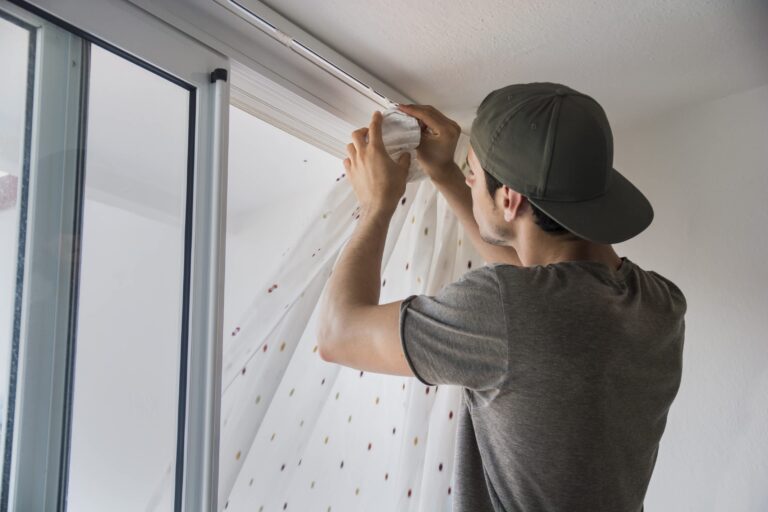
Contents
Installing curtain rods might seem like a simple task, but it can quickly become complicated depending on the type of wall and the weight of the curtains. Homeowners often wonder whether a handyman can handle such installations, especially when different wall materials are involved. This article explores the capability of Handyman for Curtain Rod Installation on various types of walls, the tools and techniques used, and addresses common concerns.
Understanding Wall Types
To appreciate the challenges and solutions in curtain rod installation, it’s essential to understand the different types of walls commonly found in homes:
1. Drywall (Gypsum Board): The most common wall type in modern homes. It’s relatively easy to work with but can be weak for supporting heavy loads without proper anchors.
2. Plaster: Found in older homes, plaster walls are harder and more brittle than drywall, making drilling more challenging.
3. Brick: Solid and strong, but requires special tools and anchors for drilling and securing.
4. Concrete: Very sturdy but requires powerful tools and specific techniques for drilling.
5. Wood Panelling: Offers a solid base for screws but needs to be handled carefully to avoid splitting.
Installing on Plaster Walls
Plaster walls are harder to work with due to their brittleness. The installation process includes:
Pre-Drilling: Handymen use masonry bits to pre-drill holes to prevent cracking.
Special Anchors: Heavy-duty anchors designed for plaster walls are used to ensure the curtain rod stays in place.
Reinforcement: Sometimes, a small piece of plywood is installed behind the plaster to provide additional support.
Installing on Brick Walls
Brick walls require a more robust approach. The process involves:
Masonry Bits: Drilling into brick requires masonry bits and a hammer drill.
Sleeve Anchors: These are inserted into the drilled holes to secure the screws.
Mortar Installation: If possible, installing into the mortar joints (the spaces between bricks) can be easier and less damaging than drilling directly into bricks.
Installing on Concrete Walls
Concrete walls are similar to brick in terms of difficulty. The steps include:
Hammer Drill: A regular drill won’t suffice; a hammer drill is necessary.
Concrete Anchors: These provide the necessary grip in the dense material of concrete.
Heavy-Duty Screws: Strong, corrosion-resistant screws are used to ensure longevity.
Installing on Wood Panelling
Wood panelling is relatively straightforward:
Wood Screws: Regular wood screws can be used, but care must be taken to avoid splitting the wood.
Pilot Holes: Drilling pilot holes first helps prevent the wood from cracking.
Tools and Techniques
Handymen bring a range of tools and techniques to ensure secure installation on any wall type, following the steps of How to Hang a Curtain
Stud Finders: Essential for locating studs in drywall installations.
Level and Measuring Tape: Ensures that curtain rods are straight and evenly spaced.
Power Drills and Bits: Various bits for different materials (masonry, wood, metal).
Anchors and Screws: A variety of anchors and screws to match the wall type and weight of the curtains.
Conclusion
A skilled handyman can indeed install curtain rods on all types of walls, employing different techniques and tools tailored to each material. Whether your walls are drywall, plaster, brick, concrete, or wood panelling, a professional handyman, such as those from HMSD Handyman Services Dubai, will ensure that your curtain rods are securely and safely installed. Proper installation not only ensures functionality but also enhances the aesthetic appeal of your space. When in doubt, hiring a professional can save time and prevent potential damage, ensuring a smooth and hassle-free installation process.
FAQs
How long does it take to install curtain rods on different wall types?
The time required can vary. Drywall installations may take about 30 minutes, while brick or concrete can take up to an hour or more per rod, depending on the complexity.
How do I know if my walls can support heavy curtains?
Most walls can support heavy curtains if the right anchors and techniques are used. A handyman will assess the wall type and choose appropriate anchors to ensure safety.
Will the installation damage my walls?
While some minimal damage is inevitable (like small holes), a professional handyman takes care to minimise this. They can also patch and touch up any minor damage if necessary.